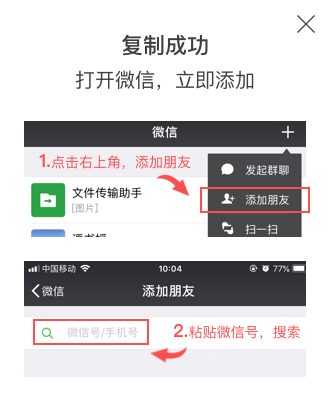European
Association
of Urology
Guidelines
EAU gUidElinEs
The Guidelines Office are pleased to present the new compilation of the European Association of Urology
th
(EAU) clinical guidelines. This is the 9 annual publication with many texts updated over the past 12 months. 浙江中医药大学附属温岭中医院泌尿外科陈小敏
An ultra-short “pocket” print accompanies this volume. In addition, all material is made available through
the association website ( http://www.uroweb.org/professional-resources/guidelines/ ). The board of the
Guidelines Office congratulate and thank our panel members for the successful culmination of their efforts in
completing these substantial publications.
Are the EAU guidelines texts helpful? The aim of clinical guidelines is to help clinicians to make informed
decisions about their patients. However, adherence to a guideline does not guarantee a successful outcome.
Ultimately, healthcare professionals must make their own decisions about care on a case-by-case basis, after
consultation with their patients, using their clinical judgement, knowledge and expertise.
What constitutes a “good” guideline? If one asks 20 methodologists there may well be 20 different answers
with only one certainty: each one will believe themselves to be correct. For the EAU, of paramount importance
is quality coupled with practicality, usability and accessibility. Each year we strive to ensure improvement in
each of these areas but recognise that guidelines development is an ambitious and dynamic, ongoing process,
in which an essential attribute is relevance. Continuous updating is mandatory, incorporating new data and
new insights to ensure that these texts remain useful to the clinical practitioner.
How can we have confidence in the recommendations? Many years ago a rating system was introduced
which is used to describe the quality of the data underlying the various recommendations. Attributing a ‘level
of evidence’ to data allows for grading the strength of a treatment recommendation. Providing transparency
between the underlying evidence and a recommendation made aims to assist the users in their clinical practice,
and we hope gives the reader confidence in the guideline. The system which is used for the EAU guidelines is
tabulated below (1).
The EAU is a unique scientific association operating in the field of urology. In parallel with numerous other
activities, we aim to produce guidance documents for colleagues in over 50 countries. This is a very ambitious
programme presenting some special challenges to our expert panels tasked with the work. Certain issues
can never be addressed in supranational guidelines because of regulatory considerations which are generally
determined on a national level. Other variables might be the availability of local resources and the level of and
opportunity for training and we recognise these factors when making recommendations. It is reassuring to know that the EAU guidelines documents often form the basis of national urological guidelines and that they
are translated and adapted by the national Urological associations in many countries both within and beyond
European boundaries; a practice vigorously supported by the EAU.
The Guidelines Office is currently gathering data on guidelines usage and preferences through an
online questionnaire. This information will become available in the course of 2009.
Guidelines development will always undergo change and globalization driven by new communication means
information is available much quicker, for example by internet publication, data share options etc. All will have
a profound effect on our professional and personal lives. For those involved in clinical guidelines development,
globalization will promote more effective collaboration outside our organisation and for the EAU this is a logical
avenue to explore, optimizing resources developing effective networks to maximise the expertise available.
Ultimately though, it falls to panels of experts willing to share their knowledge with their colleagues and to
invest an extraordinary amount of their valuable time to produce what we hope you will agree, is an impressive
publication. The European Association of Urology and their guidelines Office are most grateful that so many
experts are willing to do so. It is also very gratifying to see the interest of many young colleagues to become
involved in this work. We will do our utmost to support their efforts.
Mr. Keith F. Parsons
Chairman EAU Guidelines OfficeBoard members EAU guidelines Office
Mr. K.F. Parsons, Prof.Dr. J. Irani, Prof.Dr. T. Hánuˇs, Prof.Dr. T. Loch, Prof.Dr. C. Llorente
Liverpool (UK), Poitiers (F) Prague (CZ) Flensburg (D) Abarca, Madrid (E)
chairman vice-chairman
Prof.Dr. D. Mitropoulos, Prof.Dr. H-P. Schmid Prof.Dr. R. Sylvester, Prof.Dr. C.R. Chapple,
Athens (GR) St. Gallen (CH) Brussels (B) Sheffield (UK),
(ex-officio)
The European Association of Urology use the following rating system:
Levels of evidence and grade of guideline recommendations (1)*Table 1: Level of evidence
level Type of evidence
1a Evidence obtained from meta-analysis of randomised trials
1b Evidence obtained from at least one randomised trial
2a Evidence obtained from one well-designed controlled study without randomisation
2b Evidence obtained from at least one other type of well-designed quasi-experimental study
3 Evidence obtained from well-designed non-experimental studies, such as comparative studies,
correlation studies and case reports
4 Evidence obtained from expert committee reports or opinions or clinical experience of respected
authorities
Table 2: grade of recommendation
grade nature of recommendations
A Based on clinical studies of good quality and consistency addressing the specific recommendations
and including at least one randomised trial
B Based on well-conducted clinical studies, but without randomised clinical trials
C Made despite the absence of directly applicable clinical studies of good quality
modified from Sackett et al. (1)
Reference
1. Oxford Centre for Evidence-based Medicine Levels of Evidence (May 2001). Produced by Bob
Phillips, Chris Ball, dave Sackett, doug Badenoch, Sharon Straus, Brian Haynes, Martin dawes since
November 1998.
http://www.cebm.net/index.aspx?o=1025 [access date February 2009].
























 打开APP
打开APP